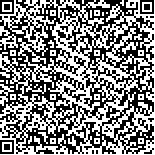| 本文已被:浏览 2039次 下载 1763次 |

码上扫一扫! |
|
|
| 气相色谱法分析海洋沉积物中多糖的组成 |
|
何碧烟1,2,3, 戴民汉2,3, 曹莉2,3, 徐立2,3, 黄伟2,3, 王新红2,3
|
|
1.集美大学;2.厦门大学海洋环境科学教育部重点实验室;3.厦门大学环境科学研究中心
|
|
| 摘要: |
| 碳水化合物是海洋有机质的主要组成部分,海洋中的碳水化合物主要以聚合物的形式存在,其分子组成信息对研究它们的来源及其在生物地球化学循环中的作用具有重要意义。作者应用毛细管气相色谱法分析了海洋沉积物中多糖的组成。利用2.0mol/L三氟乙酸,在80℃水解8h,把沉积物中的多糖水解成单糖,从而把单糖萃取到水相中。水解液在60℃旋转蒸发除去三氟乙酸,用等量的阴离子和阳离子交换树脂混合柱脱除残留离子,以Milli-Q水洗脱。洗脱液经蒸发、干燥后,用吡啶溶解,在0.2% LiClO4吡啶溶液催化下,于60℃经48h达到互变异构平衡。平衡异构体经Regisil试剂衍生化成三甲基硅醚(TMS), 用HP5890气相色谱仪进行分析。使用长30m、内径0.32mm的HP-5石英毛细管柱,配FID检测器,进样口和检测室温度保持在300℃,采用无分流进样,以N2作载气,流速为2·0ml/min,柱箱在140℃保留4min,然后以2℃/min的速度升温到220℃,保留10min。以每种单糖的相对保留时间定性;选择每种单糖中分离效果好、组成占优势的异构体峰面积作为单糖定量的依据,采用内标标准曲线法定量。应用这一方法分析了厦门港沉积物样品,确定了沉积物中7种主要中性单糖的组成。方法的样品加标准回收率为77.0%—115%,相对标准偏差为1.8%—11%;空白加标准回收率在93.8%—113%之间,相对标准偏差为0.6%—9.5%;当信噪比为3时,各单糖的检出限为0.02—0.06mg/L;内标戊五醇的全程回收率为79.8% (n=6,RSD=5·2%)。
|
| 关键词: 毛细管气相色谱, 多糖, 沉积物 |
| DOI:10.11693/hyhz200303001001 |
| 分类号: |
| 基金项目:国家自然科学基金资助项目,49976021号、国家杰出青年基金资助项目,49825111号、国家重点基础研究发展规划资助项目,G2000078500号 |
|
| APPLICATION OF CAPILLARY GAS CHROMATOGRAPHY TO THE DETERMINATION OF THE COMPOSITION OF POLYSACCHARIDES IN MARINE SEDIMENTS |
|
HE Bi-Yan,DAI Min-Han,CAO Li,XU Li,HUANG Wei,WANG Xin-Hong
|
|
1.School of Biotechnology, Jimei University;2.Ministry of Education, Marine Environmental Laboratory/ Environmental Science Research Center, Xiamen University
|
| Abstract: |
| Carbohydrates, mostly occurring as polysaccharides, represent a major component of marine organic matter. The composition of carbohydrates at a molecular level is applicable to distinguish marine-from terrestrially-derived organic matter and to understand their role in the carbon biogeochemical cycle.
We developed a gas chromatographic method to determine the composition of polysaccharides in marine sediments. Polysaccharides in sediments were hydrolyzed into monosaccharides with 2.0mol/L trifluoroacetic acid(TFA) at 80℃ for 8 hours. The hydrolysate was centrifuged and the supernatant was collected. The solution was then evaporated to remove TFA in awater bath at 60℃. The dried sample was dissolved in approximately 2m lMilli-Q water,and then run through a 20ml column packed with mixed cation and anion exchange resins (1∶1 mixture) at a flow rate of 0.8—1.0ml/min. The column is then rinsed with at least three beds volume of Milli-Q water. The deionized hydrolysatewas evaporated to dryness, upon which 0.2% (W/V) lithlum perchlorade was used to catalytically equilibrate sugar isomer mixture in pyridine at 60℃ for 48 hours. Regisil (bis(trimethylsilyl) trifluoroacetamide +1% trimethylchorosilane) was then added to form trimethylsilyl ether derivatives of sugar. Each monosaccharide was identified by itsrelative retention time, and quantified by an internal standard method. Quantification on the basis of single clearly resolved peak for each sugar is made possible by this equilibration step. Analysis was carried out using a HP5890 gas chromatography equipped with a 30m by 0.32mm i.d. fused-silica capillary column(HP-5) and with a flame ionization detector(FID). Both the injection port and the FID are maintained at a constant temperature of 300℃. The injection was splitless with a constant column flow of 2.0ml/min of N2. Column temperature was programmed from 140℃ increasing at 2℃/min after an initial delay of 4min. Under this condition, seven major neutral monosaccharides in the sediment samples taken from Xiamen Harbour, China were identified and quantified.
The method showed a spiked recovery (sample + spike) of 77%—115% with a relative standard deviation (RSD) of 1.8%—11%, and a standard recovery (blank + spike) of 94%—113% with a RSD of 1.6%—9.5%. The detection limit of the monosaccharides ranged from 0.02—0.06mg/L with a signal to noise ratio of 3. The recovery of an internal standard, adonitol, was 79.8% (n=6,RSD=5.2%) throughout the sample processing procedure.
|
| Key words: Polysaccharides, Sediment, Capillary gas chromatography |
